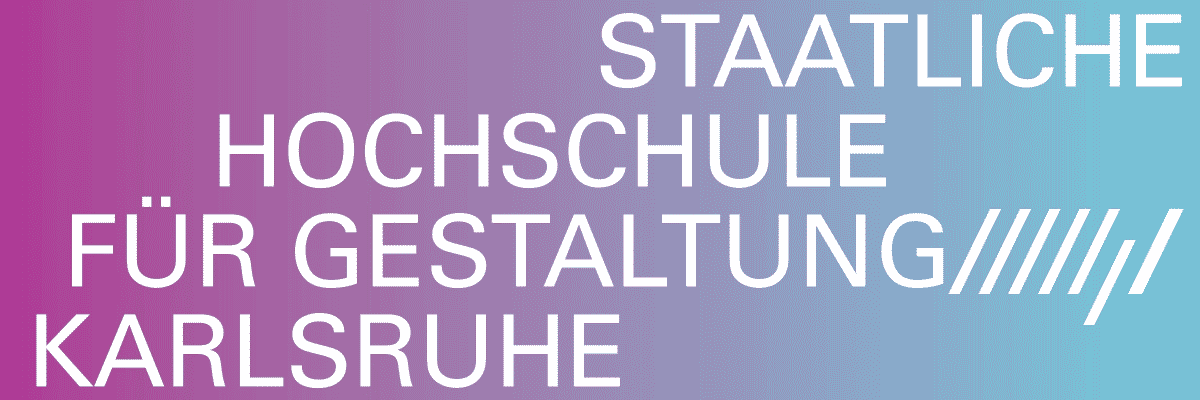
Cécile B. Evans and Troika
in a forest of red, green and blue
Project Info
- 💙 max goelitz gallery
- 🖤 Cécile B. Evans and Troika
- 💜 Dehlia Hannah
- 💛 Dirk Tacke
Share on
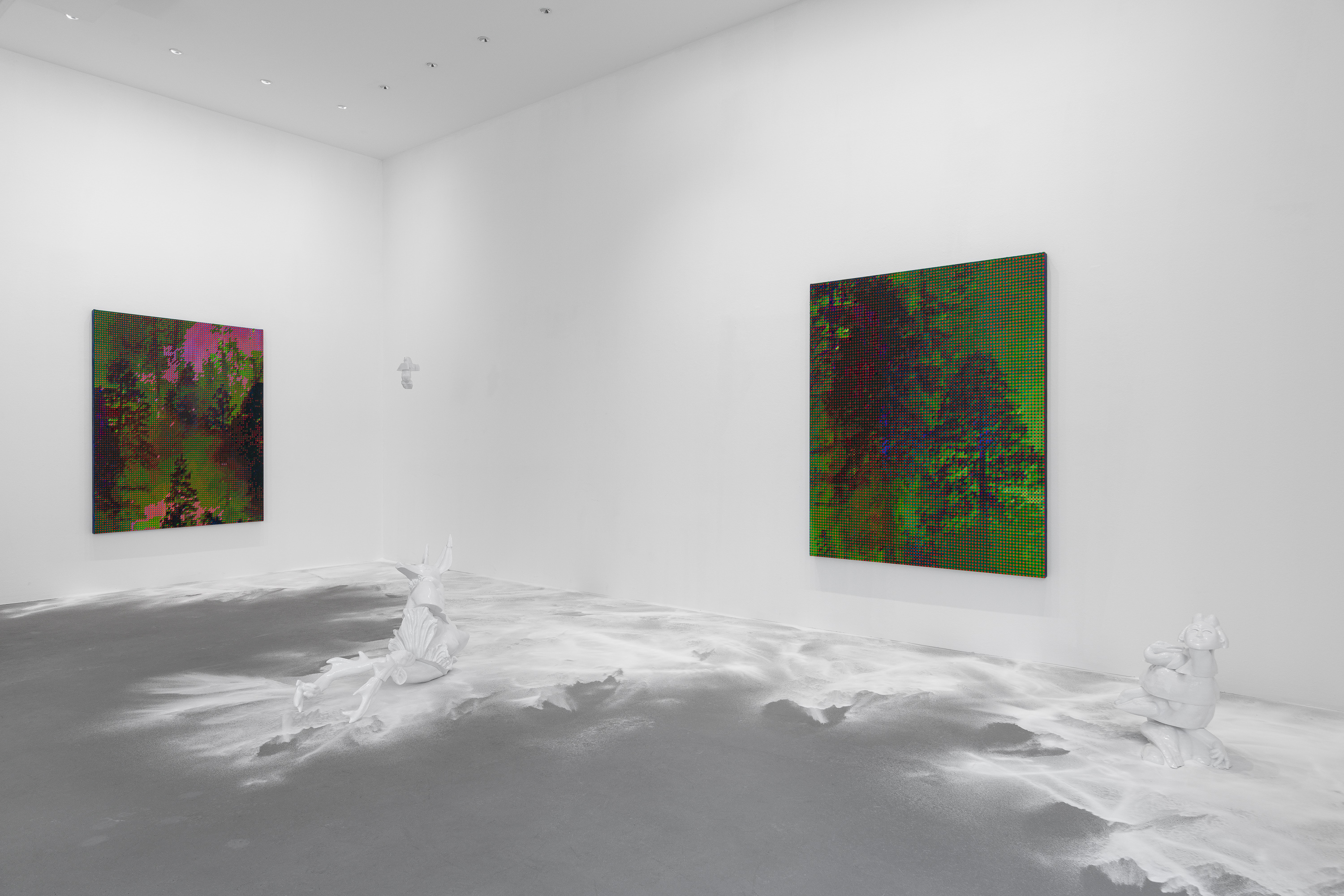
Installation view, in a forest of red, green and blue, 2023, Cécile B. Evans and Troika, courtesy of max goelitz, copyright of the artists, photo: Dirk Tacke
Advertisement
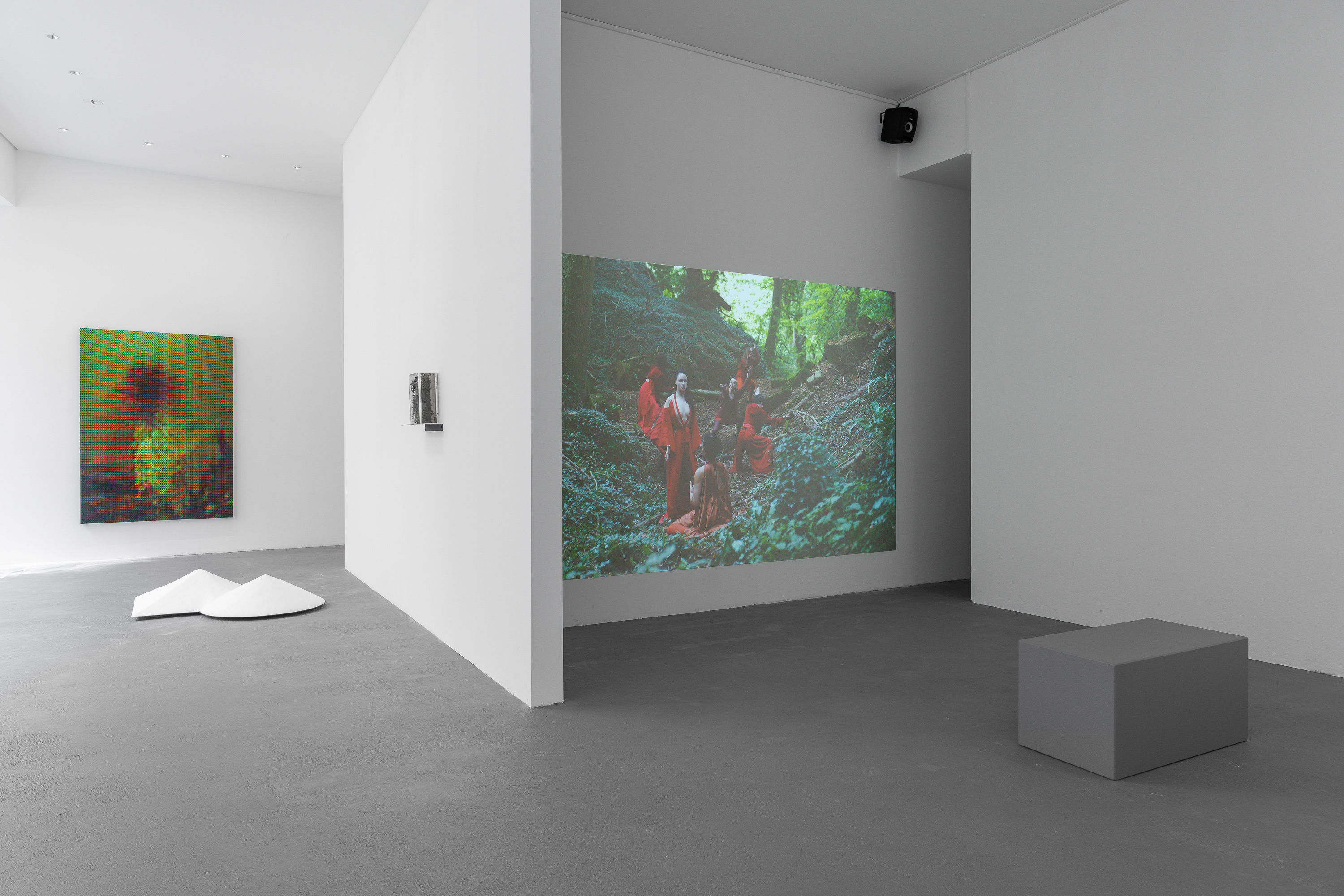
Installation view, in a forest of red, green and blue, 2023, Cécile B. Evans and Troika, courtesy of max goelitz, copyright of the artists, photo: Dirk Tacke

Installation view, in a forest of red, green and blue, 2023, Cécile B. Evans and Troika, courtesy of max goelitz, copyright of the artists, photo: Dirk Tacke
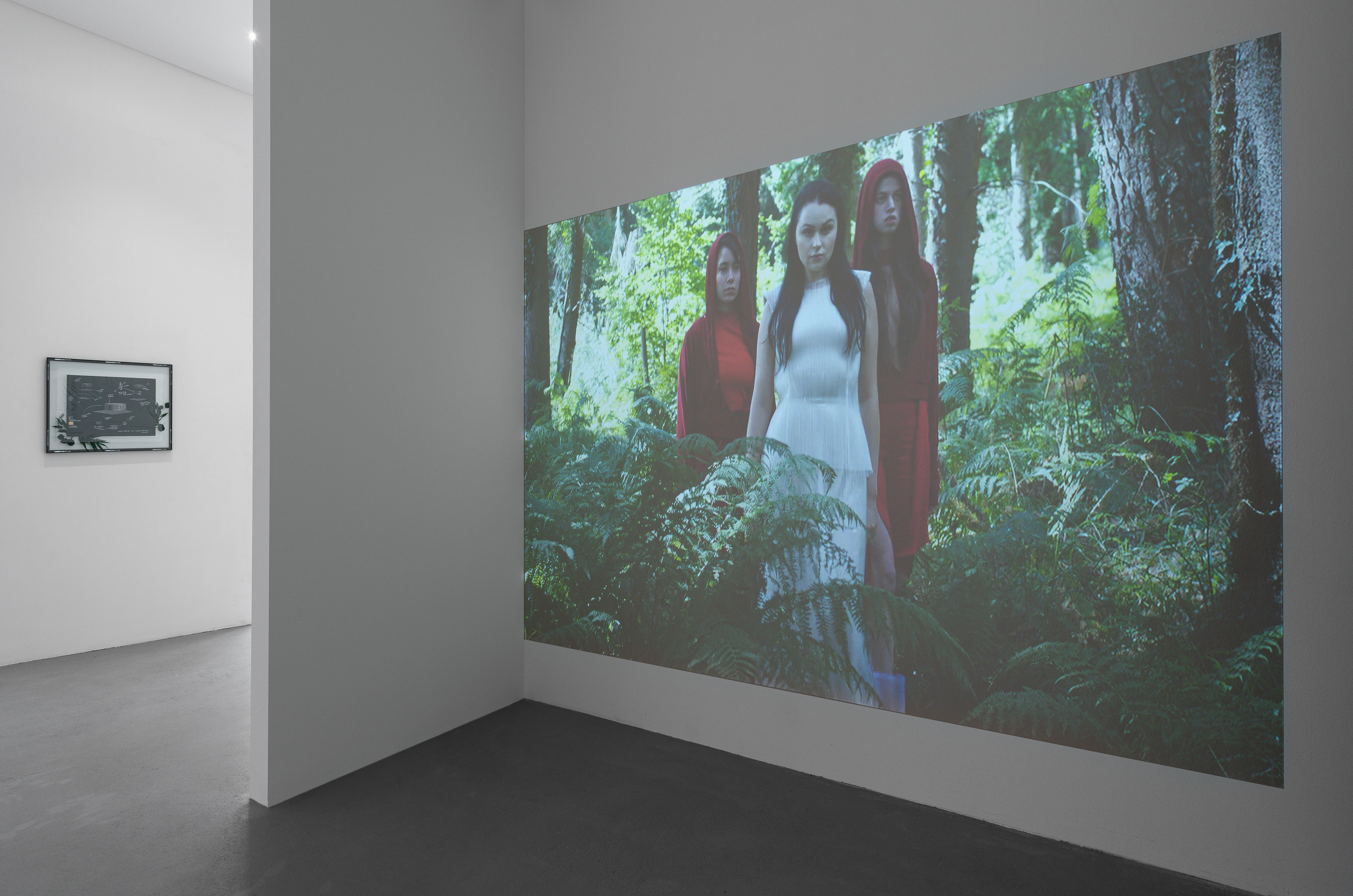
Installation view, in a forest of red, green and blue, 2023, Cécile B. Evans and Troika, courtesy of max goelitz, copyright of the artists, photo: Dirk Tacke
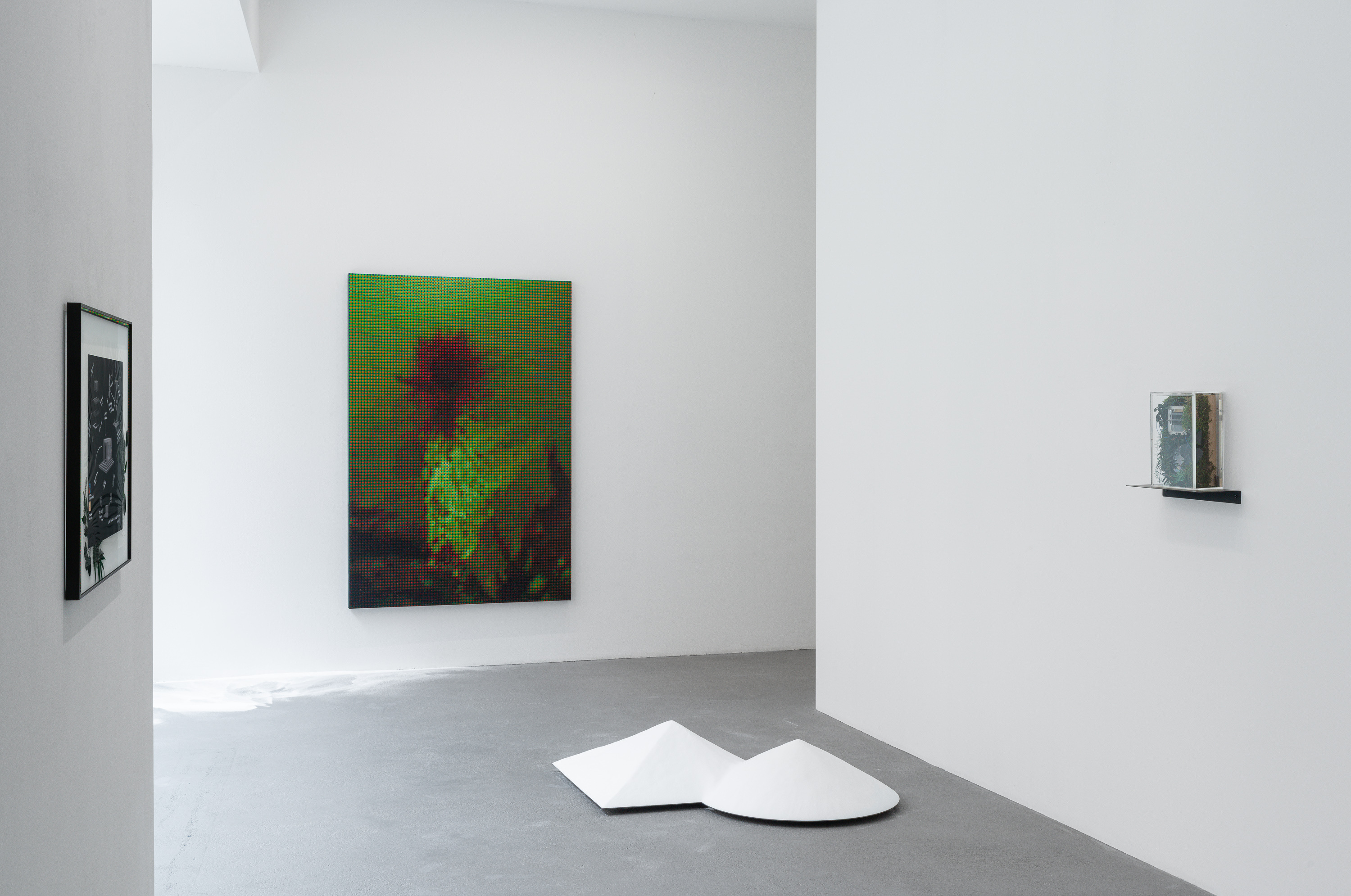
Installation view, in a forest of red, green and blue, 2023, Cécile B. Evans and Troika, courtesy of max goelitz, copyright of the artists, photo: Dirk Tacke

Cécile B. Evans, A Screen Test for an Adaption of Giselle, 2019, Courtesy of Layr, Vienna, Copyright of the artist, Photo: Dirk Tacke
![Cécile B. Evans, Nomadic Structure for a Future Adaptation (Exploded [Giselle‘s House]), 2021, Courtesy of Layr, Vienna, Copyright of the artist, Photo: Dirk Tacke](https://backend.kubaparis.com/submissions/2023/05/23/in-a-forest-of-red-green-and-blue/Cécile-B-Evans_Nomadic-Structure-for-a-Future-Adaptation_2021_CEv1_Dirk.Tacke_5_web.jpg?v=1684847635)
Cécile B. Evans, Nomadic Structure for a Future Adaptation (Exploded [Giselle‘s House]), 2021, Courtesy of Layr, Vienna, Copyright of the artist, Photo: Dirk Tacke

Cécile B. Evans, Prop for a Future Adaptation (microbial fuel cell prototype for giselle) II, 2021, Courtesy of Layr, Vienna, Copyright of the artist, Photo: Dirk Tacke

Troika, Forest Filled with Pines and Electronics, 2023, Courtesy of max goelitz, Copyright of the artists, Photo: Dirk Tacke

Troika, Forest Filled with Pines and Electronics, 2023, Courtesy of max goelitz, Copyright of the artists, Photo: Dirk Tacke
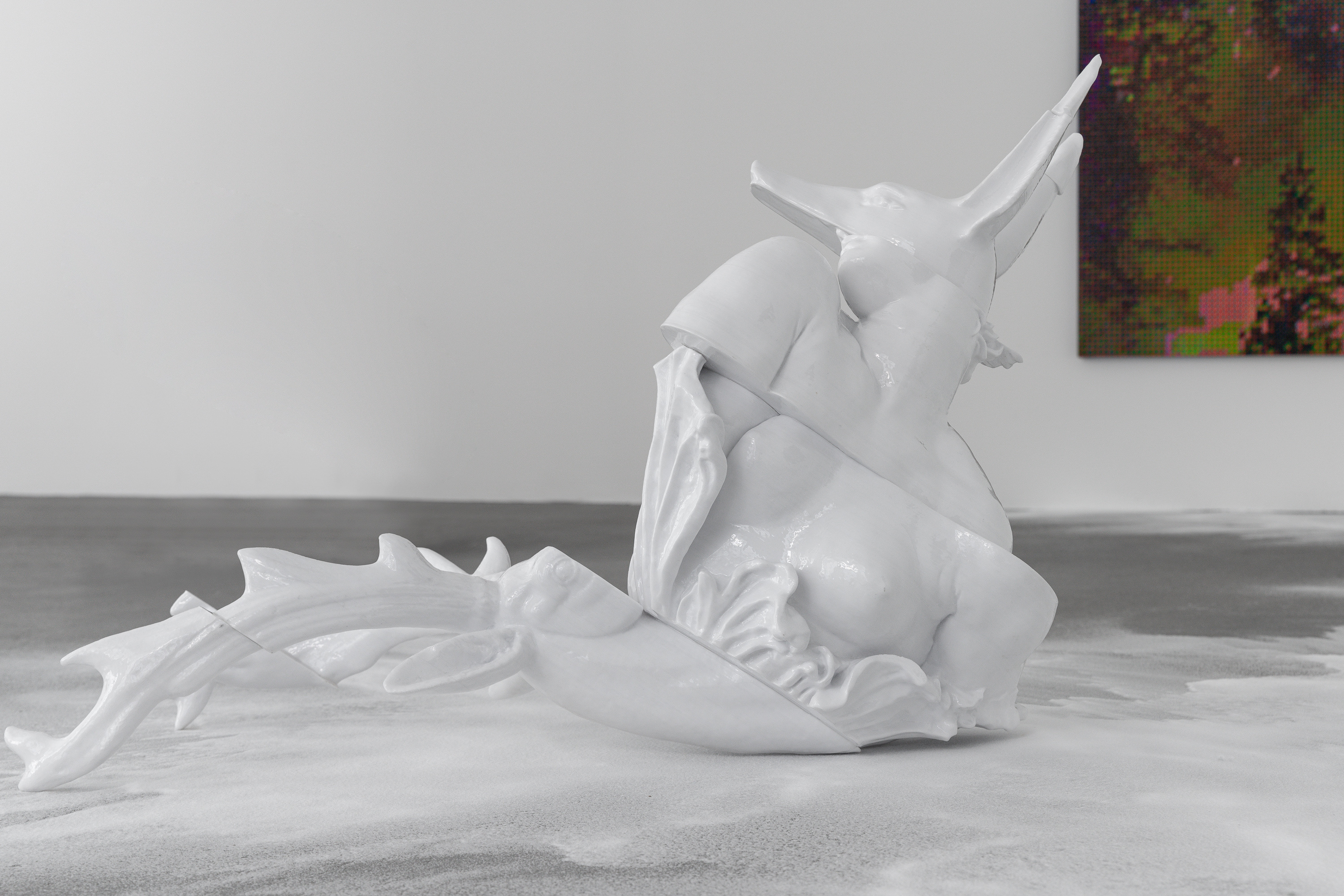
Troika, In a Forest of Red, Green and Blue (Aktaion), 2023, Courtesy of max goelitz, Copyright of the artists, Photo: Dirk Tacke
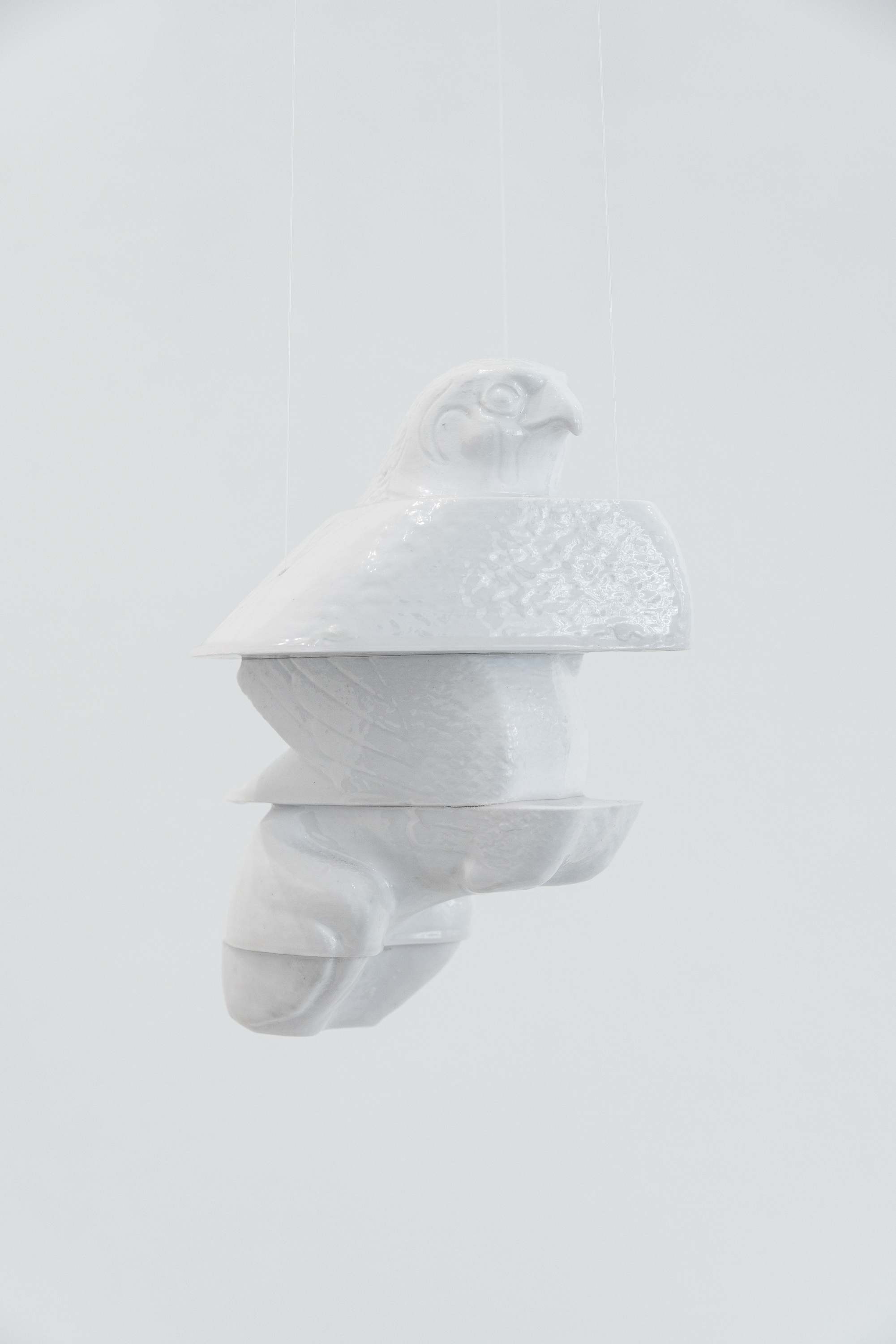
Troika, In a Forest of Red, Green and Blue (Crisper), 2023, Courtesy of max goelitz, Copyright of the artists, Photo: Dirk Tacke
“Maladaptation to the Screen“
by Dehlia Hannah
The 1818 novel “Frankenstein, Or: the Modern Prometheus“ was adapted for the stage almost immediately after its publication. Audiences were fascinated by the tale itself and horrified by the thought that it was authored by a woman only eighteen years of age. The young Mary Godwin began writing modernity’s paradigmatic tale of scientific hubris and the perils of emerging technology amid a love affair with a married man (her eventual husband Percy Shelley) and a global climate cooling crisis. On stage, Mary became a key protagonist, as the historical account of the novel’s origin blended with the science fiction story. Casting conventions emerged according to which pairs of characters would be played by the same actors; the scandalous Romantic poet Lord Byron became the Creature, Percy became Victor, and so forth. Shaping its context of reception, these early theatrical adaptations led to the novel’s re-publication, and paved the way for numerous later adaptations for stage and film.
In evolutionary biology, “adaptation“ refers to the process whereby variations in the characteristics of organisms that render them better able to survive in a particular environment are passed on to future generations. However, as the case of “Frankenstein“ suggests, adaptation across artistic genres tends to involve a more reciprocal relationship between content and context. More often than not, adaptation across media alters the meaning of the original in tandem with the new form into which it is translated. This is a tension that Cécile B. Evans takes up in “A Screen Test for an Adaption of Giselle“ (2018), an eight-minute video that reads as a trailer for a contemporary interpretation of the eponymous 1841 ballet. The video belongs to a growing constellation of mixed-media explorations of the Romantic era tale of a peasant woman who dies of a broken heart after being seduced and betrayed by a nobleman who is engaged to someone else. Giselle rises again to haunt the forest along with a band of ghosts of other aggrieved women known as the Wilis, who take revenge by dancing to death any man who enters their world. In Evans‘ evolving adaptation, the tale becomes a parable of eco-feminist resistance in an apocalyptic near-future – a future that, we may infer, has been betrayed by decisions being made in the real world today. In the suite of works to which the Screen Test belongs, the process of adaptation itself is on exhibition, in forms that cut across the real and fictional worlds in the making: multichannel video installations, sketches, rehearsals, casting calls, understudies and stage sets, including “Prop for a Future Adaptation (microbial fuel cell prototype for giselle) II“ (2021) on view here. Perhaps the adaptation is never meant to be final. Perhaps the original is not what it seemed.
Anthropogenic climate change disrupts the logic of adaptation: if the environment changes more rapidly than natural variations can be transmitted from one generation to the next, this raises the prospect of maladaptation, an ill-fit between organism and environment. The duo exhibition of Cécile B. Evans and the collective Troika (Eva Rucki, Conny Freyer and Sebastien Noel), “in a forest of red, green and blue“ enacts the drama of adaptation to the screen as both an aesthetic and an ecological project – and at the same time holds open possibilities of failure. Troika’s series of paintings titled “Forest filled with Pines and Electronics“ presents an alternative dramatization of adaptation to the screen, here questioning whether the forest itself can undergo such a process. Elaborating the representational logic of their previous series Irma “Watched over by Machines“, which was based on CCTV footage of damage inflicted by hurricanes, the present series reconstructs images of forest fires using sixteen shades of red, green and blue in reference to the Bayer filter at the core of RAW digital images. Recognizing the increase in wildfire risk caused by climate change, as well as associated issues such as illegal logging,
environmental monitoring systems have been put in place in many locations around the world. In the ‘Internet of Trees’, networked digital video cameras are attached directly to trees in order to detect early warnings of fire, at the same time rendering the cameras themselves vulnerable to flame. “Forest filled with Pines and Electronics“ (2023) captures one such moment of a wildfire that burned through the north of California in 2021, and imagines how the forest looked to the machine in its last moments of digital vision. While such ‘Smart Forests’ embody the promise of adapting to climate change with the aid of technology, we are here invited to question the implications of screening environmental disaster.
In the corner of the gallery, a fine white dust accumulates on the floor in ephemeral patterns that mirror the traversal of air and feet through the room. Like sun-bleached bones laid bare on windswept desert sands, a horned statue protrudes from this temporary configuration of matter, conferring on the ensemble the quality of an optical illusion. Elsewhere, fragmentary chimeras offer intimations of a bird and a human torso emerging from the shifting planes of salt. Imagined as its inhabitant, “In a Forest of Red, Green and Blue (Aktaion)“ (2023) is composed of slices cast from 3D digital models of classical statues, reassembled in stacks missing certain transitional intervals. It is associated with the series “Compression Loss“, which borrows its name from loss of data density that occurs when digital files are copied repeatedly, and refers more broadly to the problem of reassembling a whole from component parts. The specter of Frankenstein haunts the digital domain, where the smooth screen gives way all too readily to glitches and jagged recombinant sculptural motifs. By contrast, the scalable geometry of “Pile of salt“ (2023) offers a vision of seamless transition between digital and material forms. Where the electronic spirits of the forest prove unfit to save it from conflagration, capable merely of witnessing its destruction, the sculptural forms emerging from the salted earth pose the question of adaptation anew. Through a queer femme alliance with the forest itself, Evans’ adaptation of Giselle conjures feminine rage as ecological revolt–perhaps against humanity’s betrayal. If the screen adaptation is incomplete, fragmented, and fraught with prospects of misfit, the project demands a reconsideration of a key tenet of Romanticism: namely its focus on the individual as the locus of emotion and subjectivity. The classical literary form of the era, the “Bildungsroman“, recounts the tale of personal growth and inculturation – a story that goes horribly wrong in the case of Shelley’s outcast Creature. Romanticism’s preoccupation with fragments – sculptural, literary, and even political – runs in parallel with this anxiety to maintain the coherence of the individual, an anxiety that is amplified by an order of magnitude in the digital era. And yet, one of the profound affordances of fragmentation is the prospect of alternative distributions of agency and assemblies of meaning. Maladaptation to the screen names this space of indeterminacy, resistance, and mutuality between beings and environs – a process in which the future is not yet scripted.
Dehlia Hannah, is a curator and philosopher of nature. She is currently a postdoctoral fellow at The Royal Danish Academy of Fine Arts and ARKEN Museum of Modern Art, where her project “Rewilding the Museum“ examines the art museum’s status within the fragile ecologies of the Anthropocene. She received her PhD in Philosophy and Certificate in Feminist Inquiry from Columbia University, with specializations in aesthetics, philosophy of science and philosophy of nature.
Dehlia Hannah

